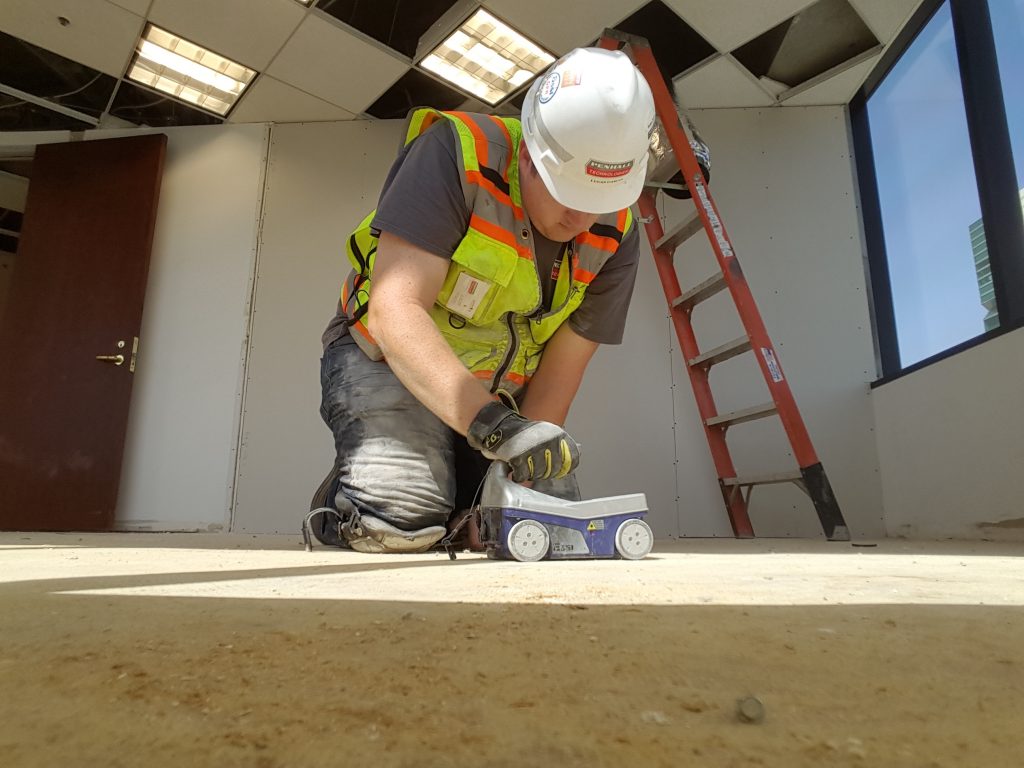The Value of Precise Concrete Scanning in Finding Underground Hazards
The capacity to precisely spot and map these below ground threats is not simply a matter of ease but a crucial element of ensuring the safety and security of both building employees and the stability of the project itself. By releasing advanced scanning modern technologies and approaches, specialists can discover surprise risks, protect against expensive problems, and ultimately lead the way for smoother and much safer construction ventures.
Advanced Scanning Technologies for Discovery
Advanced radar systems are revolutionizing the field of below ground detection by supplying exceptional accuracy and effectiveness. These innovative scanning technologies use ground-penetrating radar (GPR) to develop comprehensive photos of subsurface structures, supplying insights into what exists under the surface with impressive clarity. By emitting high-frequency pulses into the ground and determining the representations, radar systems can recognize variations in material structure and find below ground hazards such as pipes, cable televisions, and spaces.
One of the vital advantages of these sophisticated radar systems is their non-invasive nature, permitting extensive assessments without creating damage to the existing structures. This not only makes sure the safety and security of the surrounding atmosphere however likewise lessens the requirement for pricey repair services or disturbances to continuous building jobs. Furthermore, the real-time data provided by these scanning innovations allows quick decision-making and boosts overall task effectiveness.
Relevance of Subsurface Mapping

Precise subsurface mapping assists in protecting against costly damages to existing underground infrastructure, decreasing the danger of mishaps, and keeping task timelines. It makes it possible for project managers to make informed decisions regarding site planning, equipment deployment, and resource allocation. Additionally, subsurface mapping enables much better sychronisation among different teams working on a job and helps in following regulative needs associated with below ground utility detection.
Mitigating Threats in Building And Construction Jobs
Efficient danger reduction techniques are essential for making certain the success and safety of building and construction projects. One vital aspect of mitigating dangers in construction jobs is thorough planning and analysis at the preliminary phases.
Furthermore, developing clear communication networks among all job stakeholders and ensuring stringent adherence to safety and security protocols are crucial components of danger reduction. Regular assessments, quality assurance steps, and surveillance of work development can assist in recognizing and addressing any emerging threats without delay. Furthermore, having contingency plans in position for unanticipated obstacles can considerably decrease the impact of disturbances on the task. By proactively implementing robust danger mitigation techniques, building and construction tasks can decrease hold-ups, price overruns, and safety and security incidents, ultimately leading to successful project end results.

Avoiding Pricey Damages and Delays
To decrease economic losses and task troubles, reliable methods have to be applied to protect against pricey problems and delays in building jobs. Determining these obstructions early on helps in planning the task format a lot more effectively and avoiding potential problems throughout excavation.
Furthermore, investing in training programs for construction workers on the relevance of concrete scanning and secure excavation methods can considerably decrease the risk of accidents and hold-ups. Clear communication networks in between project supervisors, designers, and on-site workers are also important to make certain that everybody recognizes the possible dangers and complies with the necessary methods to stop costly problems. By prioritizing proactive actions like concrete scanning and promoting a society of security and awareness, building and construction tasks can decrease the monetary impact of unanticipated underground blockages and stay clear of expensive delays.
Ensuring Safety And Security of On-Site Worker
By focusing on positive measures such as detailed training pop over here programs and clear click here now communication networks, construction jobs can make certain the safety of on-site employees amid the prospective dangers detected with concrete scanning. Correct training equips workers with the understanding and abilities required to navigate building websites safely, especially when dangers are recognized through scanning processes. Training must cover threat recognition, emergency treatments, and the appropriate application of individual safety devices to alleviate threats successfully.
Additionally, developing clear communication networks is critical for distributing details about determined dangers quickly. This makes certain that all on-site employees are conscious of prospective risks and can take essential precautions to avoid accidents. Regular safety rundowns, toolbox talks, and consistent updates concerning scanning results assistance keep everyone informed and proactive in maintaining a secure functioning setting.
In addition, applying rigorous adherence to safety and security procedures and guidelines, carrying out regular safety audits, and fostering a society of security consciousness among employees are essential elements in making sure the wellness of on-site workers during building and construction tasks - RainierGPR Concrete Scanning. Positive safety measures not just secure workers from harm yet likewise contribute to the overall success and performance of the job
Final Thought
Utilizing sophisticated scanning modern technologies and subsurface mapping helps alleviate threats in building jobs, preventing expensive problems and delays. It is essential for construction business to focus on the usage of precise scanning techniques to lessen possible risks and make sure a smooth building and construction procedure.

By proactively applying robust risk mitigation strategies, construction projects can reduce delays, cost overruns, and safety incidents, ultimately leading to successful project results. - RainierGPR Concrete Scanning
To reduce monetary losses and home job problems, efficient techniques should be executed to avoid costly damages and hold-ups in building and construction tasks. By focusing on aggressive procedures like concrete scanning and advertising a culture of safety and awareness, building and construction tasks can lessen the monetary impact of unexpected below ground obstructions and avoid costly hold-ups.
By prioritizing proactive actions such as detailed training programs and clear communication channels, building and construction tasks can guarantee the safety of on-site personnel in the middle of the prospective hazards detected via concrete scanning. Using advanced scanning modern technologies and subsurface mapping assists mitigate threats in building projects, stopping expensive damages and hold-ups.